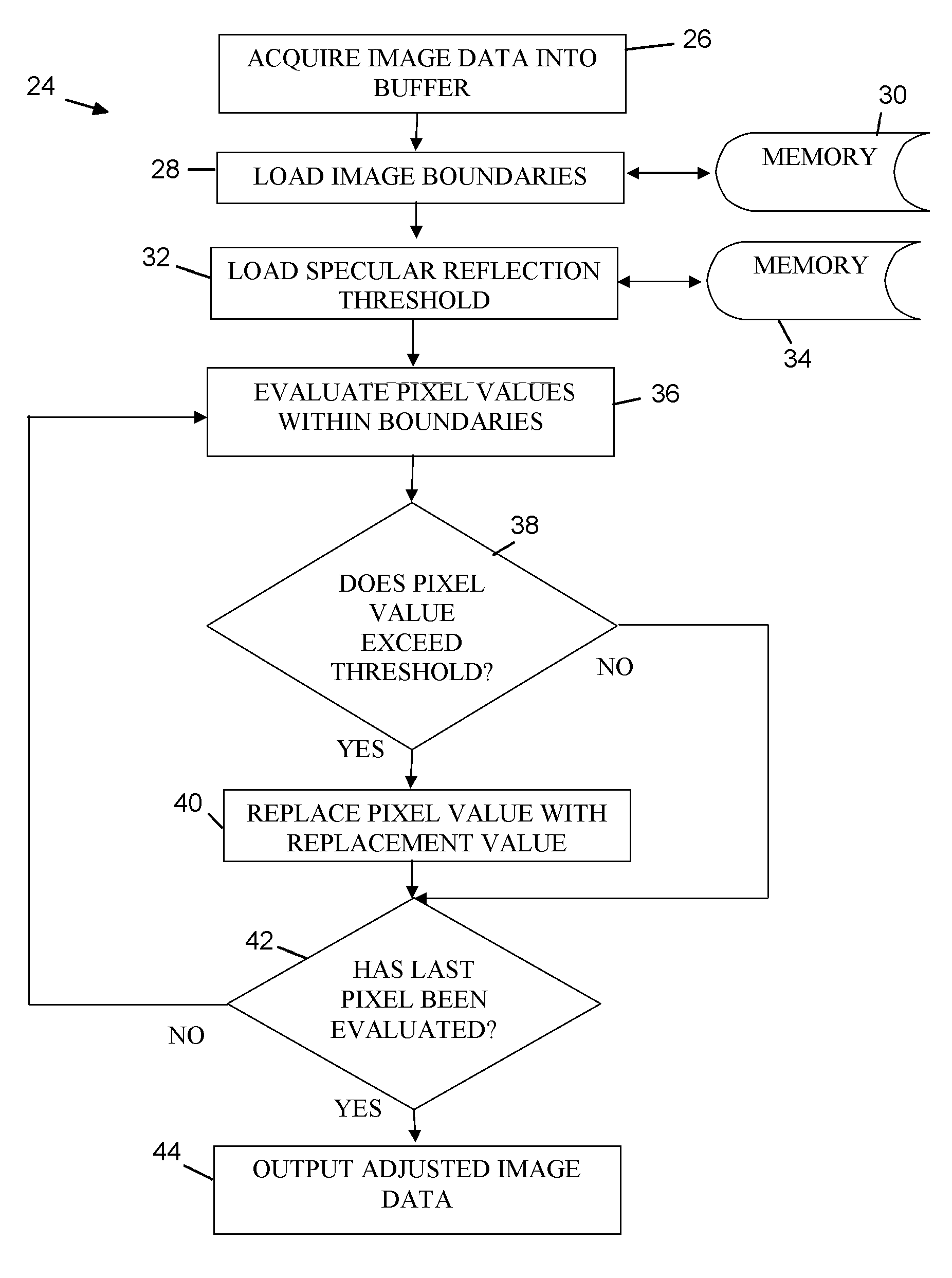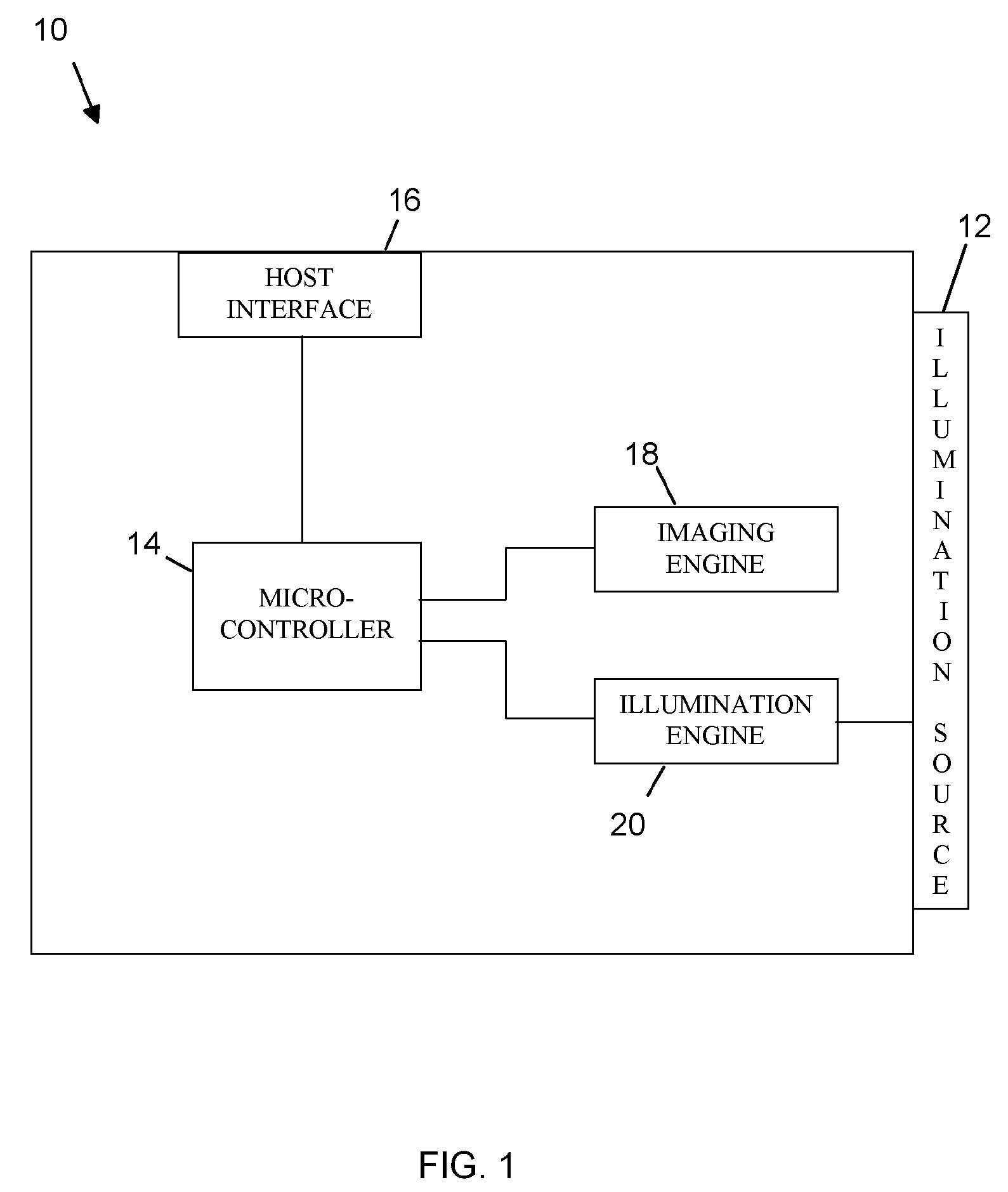System and Method for Reducing Specular Reflection
a specular reflection and system technology, applied in the field of image capture and data collection systems, can solve the problems of specular reflection, glare, cost and time-consuming implementation, and achieve the effects of reducing specular reflection, reducing cost, and reducing specular reflection
- Summary
- Abstract
- Description
- Claims
- Application Information
AI Technical Summary
Benefits of technology
Problems solved by technology
Method used
Image
Examples
Embodiment Construction
[0014]Referring now to the drawings, wherein like reference numerals refer to like parts throughout, there is seen in FIG. 1, an imaging unit 10 according to the present invention, Imaging unit 10 preferably includes an on-board illumination source 12 comprising one or more light emitting diodes (LEDs) of various wavelengths, to provide illumination of a target (not shown) to be imaged and interpreted. Alternatively, illumination source 12 may be separately attached to imaging unit 10 and positioned proximately thereto.
[0015]Imaging unit 10 further includes a microcontroller 14 for managing imaging and illumination operations, performing processing of captured images, and communicating with a remote device, such as a host computer, if desired. For example, imaging unit 10 may include a host interface 16, such as a conventional RS232 transceiver and associated 12 pin FFC jack. Alternatively, interface 16 may comprise other conventional buses, such as USB, IEEE, 1394, IrDA, PCMCIA, or...
PUM
 Login to View More
Login to View More Abstract
Description
Claims
Application Information
 Login to View More
Login to View More - R&D
- Intellectual Property
- Life Sciences
- Materials
- Tech Scout
- Unparalleled Data Quality
- Higher Quality Content
- 60% Fewer Hallucinations
Browse by: Latest US Patents, China's latest patents, Technical Efficacy Thesaurus, Application Domain, Technology Topic, Popular Technical Reports.
© 2025 PatSnap. All rights reserved.Legal|Privacy policy|Modern Slavery Act Transparency Statement|Sitemap|About US| Contact US: help@patsnap.com



